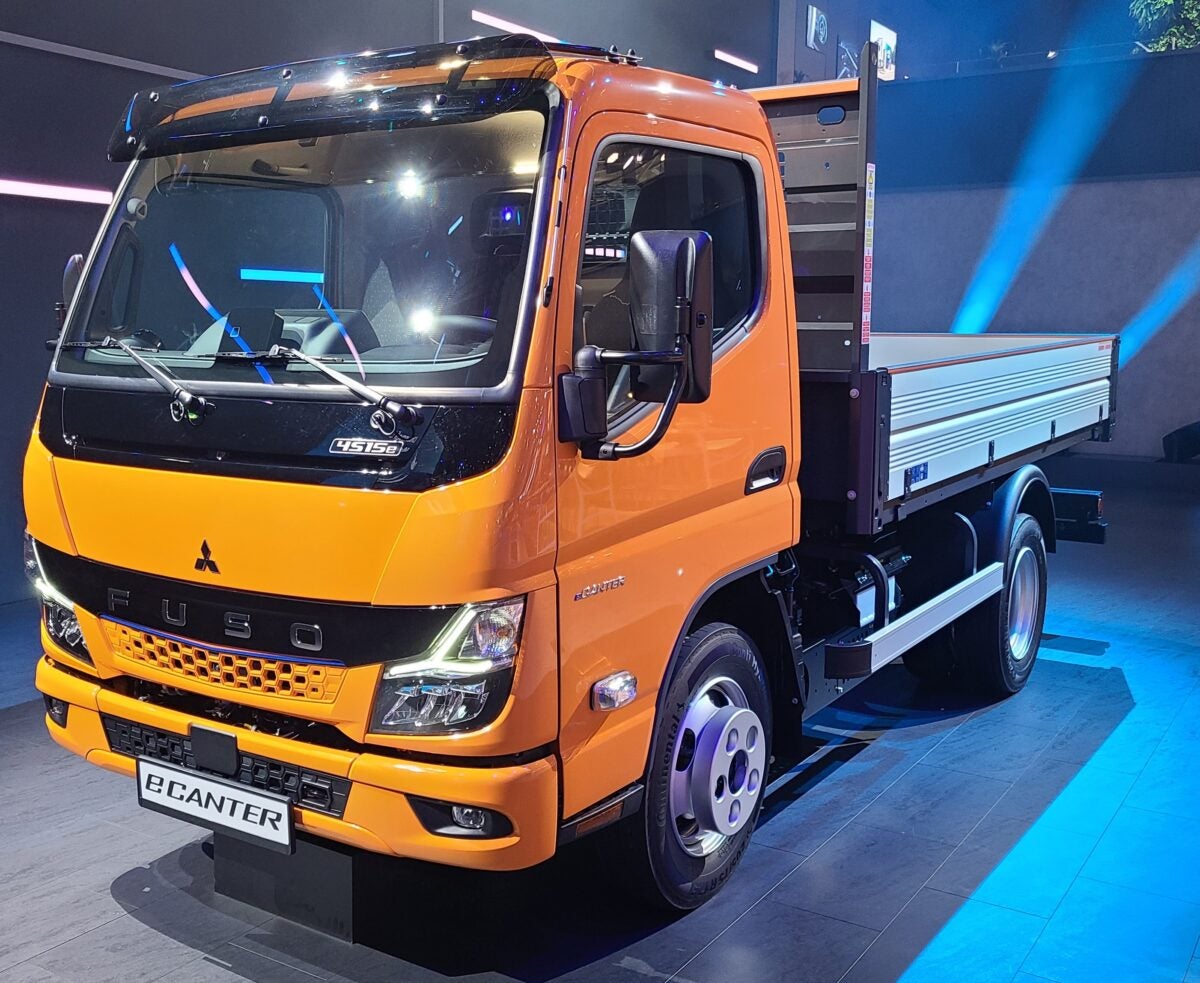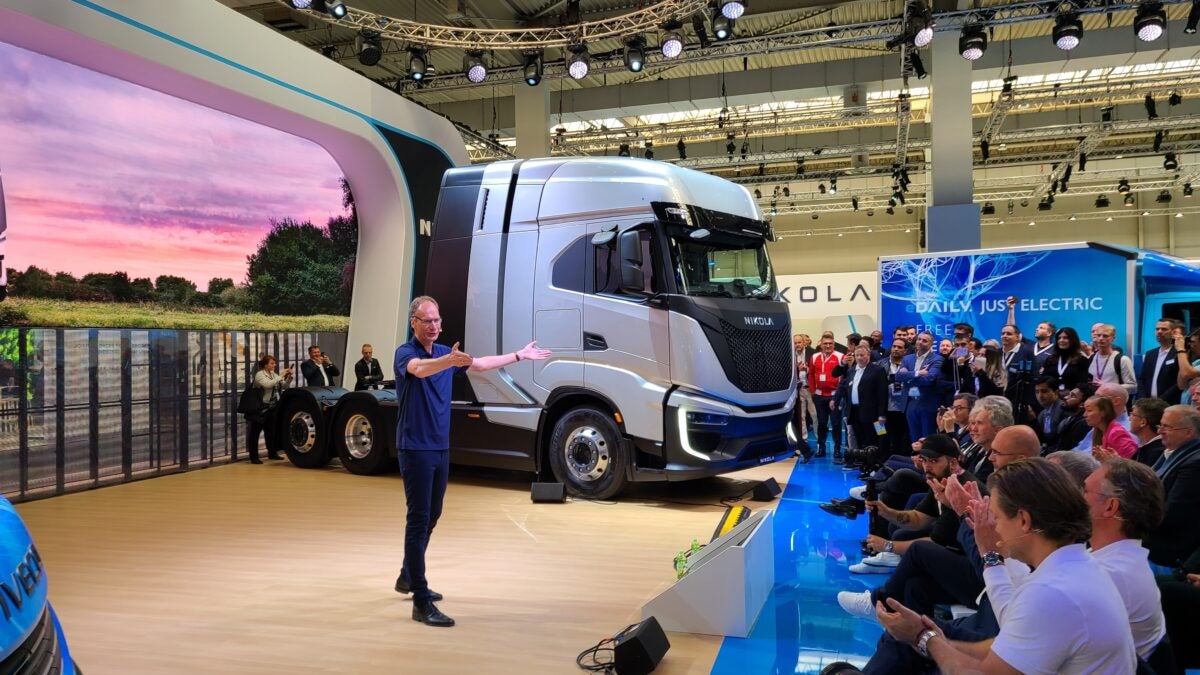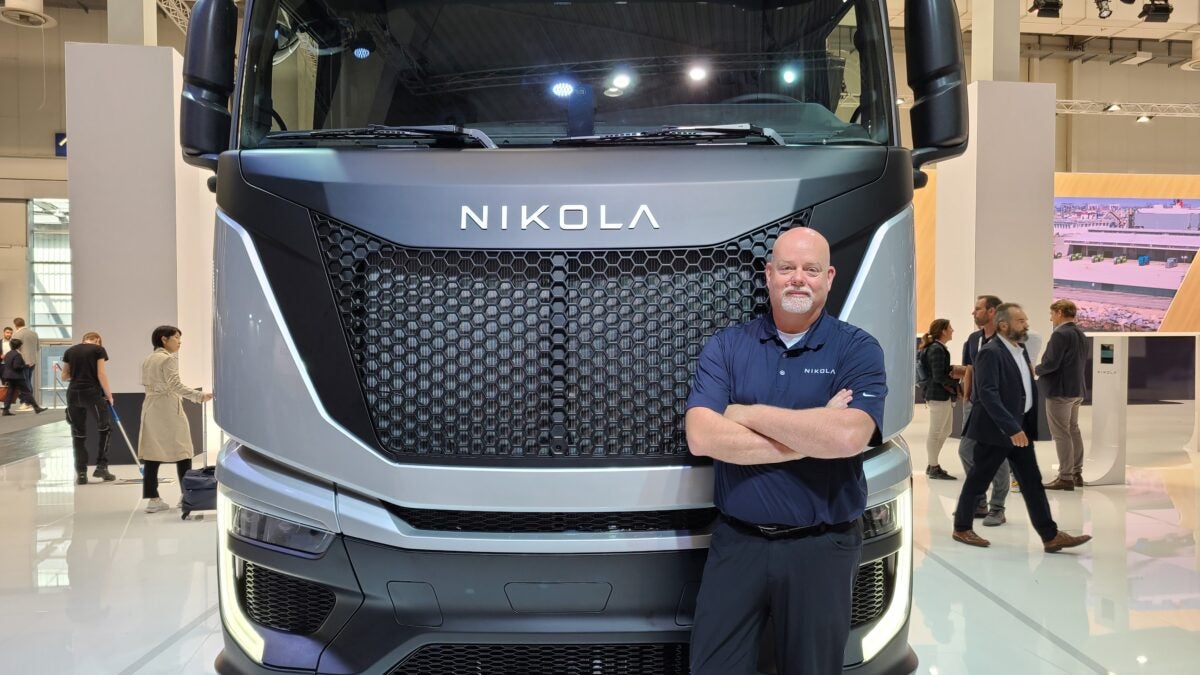A few days in Germany revealed an inconvenient truth about real-world applications of battery-electric and hydrogen-powered trucks. Inadequate infrastructure, a lack of drivers and traffic congestion will frustrate meaningful expansion for sometime to come.
Jolt of electric truck reality
A visit to the aging DB Schenker freight distribution center outside Frankfurt, Germany, injected a jolt of reality about electric trucks. The near giddiness surrounding the reveal of battery-electric and hydrogen-powered models at this week’s IAA Transportation 2022 is a far cry from the reality of operating them.
Across multiple halls of the Hannover messe, global truck manufacturers revealed electric models to throbbing bass beats common to a techno pop dance club.
Long-haul and medium-duty trucks, fuel cells, advanced batteries, even last-mile electric bikes took turns on small stages within corporate displays. Debuts took the form of scripted 20-minute news conferences. Executives exhibited varying levels of aplomb in reading from a teleprompter.
A clear theme emerged. The time for electric trucks is now. The environment cannot wait.
But it appears it will have to.
Plethora of challenges
At the Schenker facility officials explain the conundrum of charging its 172 electric vehicles spread across 14 countries.

Installing direct-current fast-chargers in places like Frankfurt would jeopardize the flow of power to area homes and businesses. More Mitsubishi Fuso eCanter electric trucks are used by Schenker than anyone in the world. They charge only at night when grid stress is minimal.
Drivers plead for greater range between charging. They suffer range anxiety because of congestion exacerbated by narrow streets. It requires careful choreography and planning to avoid getting stuck in traffic with a dead battery.
A second-generation eCanter revealed in Hannover offers three sizes of batteries for multiple uses. That will address the range concern when the Daimler Truck-owned subsidiary begins production in Japan next year. (The eCanter exited the U.S. market in 2020 and Daimler has no immediate plans to import the new version.)
None of this addresses a very real driver shortage — estimated at 100,000 across the continent — and most recently worsened by Russia’s invasion of Ukraine. Many Ukrainian men have left behind driving jobs to fight in the war.
In the Schenker yard, a new eActros 300 from Mercedes-Benz Trucks poses among swap bodies similar to intermodal cargo containers. They shift from truck to truck throughout the day. Practically all of those trucks run on diesel.

What-if scenario
Europe’s Iveco and its manufacturing joint-venture partner Nikola Corp. required back-to-back news conferences for their reveals on Monday.
Iveco revealed a hydrogen fuel cell-powered version of its Daily van. It represents the second fruit of a partnership with Korea’s Hyundai Motor Corp. Earlier this year, Hyundai began powering Iveco buses with the fuel cell system from its Xcient electric truck. (Thirty Xcients arrive for U.S. testing next year in the Port of Oakland with another five destined for Southern California.)
Iveco CEO Garrit Marx gave a shout-out to autonomous truck software developer Plus. Iveco and Plus are testing a natural gas-powered Level 4 high-autonomy Iveco truck on European highways at Level 2 autonomy with a safety driver on board.
Given the alliance, it reintroduces a question: Could the Plus technology being tried out in the Iveco S-Way end up in the S-Way-based Nikola Tre? The what-if scenario came up when Iveco parent CNH Industrial was shopping Iveco to potential buyers, including China’s First Auto Works (FAW). China’s largest truck maker has a manufacturing joint venture with Plus.
“It’s a very interesting and important topic for us,” Nikola President and incoming CEO Michael Lohscheller told FreightWaves after revealing the production intent version of the Tre fuel cell cabover that goes into U.S. production in the second half of 2023 followed by European builds a year later. “It’s a benefit that Iveco is having the partnership.”
Lohscheller said Nikola is talking to multiple autonomous trucking companies about working together.
“More to come,” he said.

More from IAA Transportation 2022 …
The curious lack of capitalization at cellcentric
Why is the Daimler Truck Volvo Group fuel cell joint venture spelled with a lowercase C? It has more to do with a trademark than with trying to be cool. Turns out that CellCentric is the name of a U.K.-based biotechnology company working on cancer drugs.
The fuel cell version of cellcentric launched in 2021 when Volvo paid $600 million for 50% of the venture and decades of Daimler’s experience it transferred from cars to trucks. Daimler CEO Martin Daum explained that fuel cell development was too expensive to pursue alone, and Volvo was looking for a partner to get in the game.
Volvo said this week it will begin testing cellcentric fuel cell stacks in 2025. Daimler plans to start customer testing of its GenH2 truck with customers next year. In Daimler’s case, its fuel cell is actually a parallel hybrid that switches from operating on batteries to hydrogen depending on terrain and other use case factors.
Corporate relocation blues
Nikola global manufacturing chief Mark Duchesne is going through one of those corporate relocations that gives moving a bad name.
With the second phase of Nikola’s greenfield plant in Coolidge, Arizona, under way, Duchesne thought it was OK to put down roots and buy a house in the Phoenix area after renting for two years.
Then Nikola bought its struggling battery pack supplier Romeo Power. Since Romeo is based in Cypress, California, Duchesne was dispatched to Orange County, where his expertise is needed to keep pack supply moving as Nikola seeks to ramp up Tre battery-electric truck production, currently running at three trucks a day.
That house Duchesne and his wife purchased in Arizona is now a rental.

Another zero-emissions experiment winds down
The California-subsidized hydrogen fuel cell truck collaboration between Toyota and Kenworth is wrapping up after four years of testing.
If Kenworth continues to work on fuel cells, it could be a customer of Toyota, which plans to begin producing stacks at a plant in Kentucky next year. Kenworth parent Paccar Inc. mentions fuel cells as a zero-emissions lever for long-haul trucking. It’s not yet saying what that would look like or when to expect it.
“The potential for this technology as a replacement for higher-emission powertrains is real and supports both regulatory and society initiatives to combat climate change while helping us achieve our own goals of carbon neutrality,” Andrew Lund, Toyota chief engineer of zero-emission advanced product planning, said in a news release.
The Zero- and Near-Zero Emissions Freight Facilities (ZANZEFF) “Shore to Store” project received a $41 million grant from the California Air Resources Board.
Using Shell hydrogen, the fuel cell-equipped T680 covered more than 300 miles when fully loaded to 82,000 pounds with no downtime between shifts and a 15- to 20-minute fill time.
Though officially done with the project code named Ocean, a few of the trucks will remain in use for demonstration or as work trucks, including one that will continue supporting Toyota operations in the Port of Los Angeles.
Separately, Volvo Trucks wound down its Volvo LIGHTS multiyear, multi-partner electric truck demonstration program in August.
That’s all for this week. Thanks for reading. Click here to get Truck Tech by email on Fridays.
Alan










